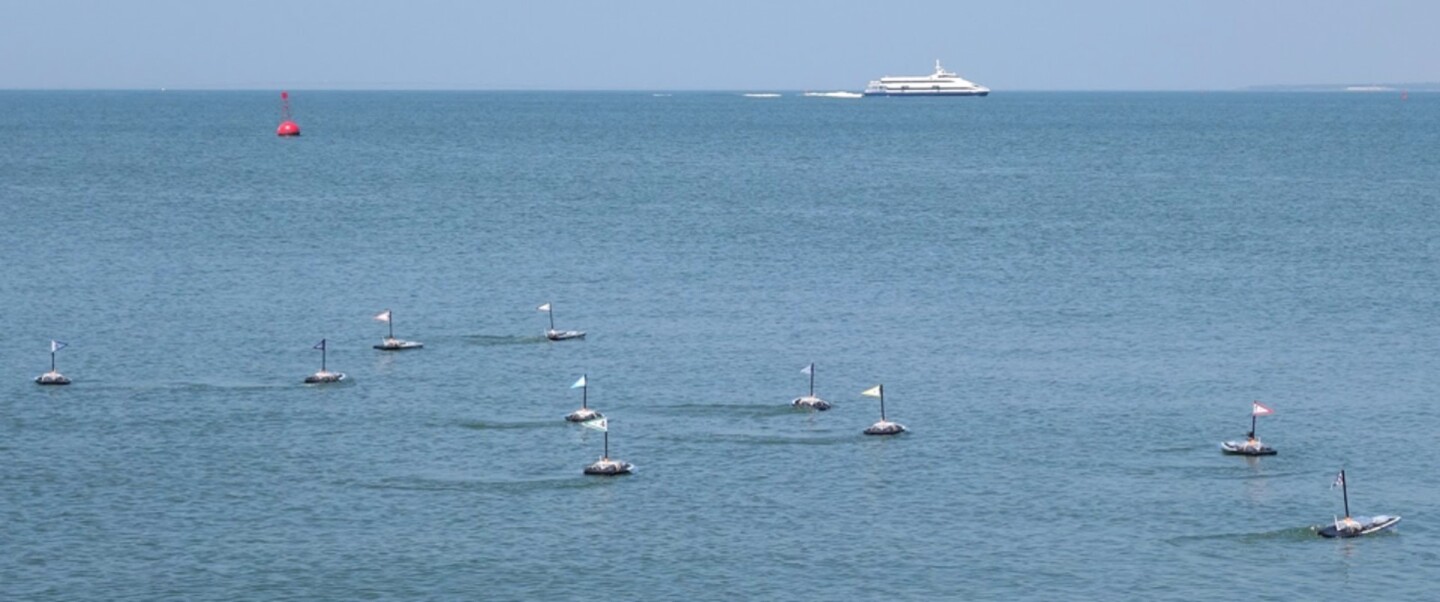Robots may be the wave of the future, but it will be a pretty chaotic future if they don't learn to work together. This cooperative approach is known as swarm robotics and in a first in the field, a team of engineers has demonstrated a swarm of intelligent aquatic surface robots that can operate together in a real-world environment. Using "Darwinian" learning, the robots are designed to teach themselves how to cooperate in carrying out a task.
A major problem facing the navies of the world is that as ships become more sophisticated they also become much more expensive. They are packed with highly trained personnel that cannot be put at risk, except in the most extreme circumstances, and even the most advanced ship suffers from not being able to be in two places at once.
One solution to this dilemma is to augment the ships with swarms of robot boats that can act as auxiliary fleets at much lower cost and without risk of life. The tricky bit is figuring out how to get this swarm to carry out missions without turning into a robotic version of the Keystone Cops. The approach being pursued by a team from the Institute of Telecommunications at University Institute of Lisbon and the University of Lisbon in Portugal is to rely on self-learning robots.
Led by Dr. Anders Christensen, the team recently demonstrated how up to ten robots can operate together to complete various tasks. The small robots are made of CNC-machined polystyrene foam and 3D-printed components at a materials cost of about €300 (US$330). The electronics pack include GPS, compass, Wi-Fi, and a Raspberry Pi 2 computer. However, the key is their decentralized programming.

"Swarm robotics is a paradigm shift: we rely on many small, simple, and inexpensive robots, instead of a single or a few large, complex, and expensive robots," says Christensen. "Controlling a large-scale swarm of robots cannot be done centrally. Each robot must decide for itself how to carry out the mission, and coordinate with its neighbors."
Instead of using a central computer or programming each robot individually, the swarm operates on what the team calls a Darwinian approach. In other words, each robot is equipped with a neural network that mimics the operations of a living brain. The robots are given a simple set of instructions about how to operate in relationship to one another as well as mission goals.
The robots are then allowed to interact with one another in a simulated environment and those that display successful mission behavior are allowed to proceed. The "fittest" robots from the simulations are then tested in the real world.
According to the team, the clever bit about the swarm is that, like schools of fish or flocks of birds, none of the robots know of or "care" about the other robots beyond their immediate neighbors. Instead, they react to what their immediate neighbors do as they determine the best way to fulfill their mission objectives such as area monitoring, navigation to waypoint, aggregation, and dispersion. In a sense, they learn to cooperate with one another.
The team is currently working on the next generation of aquatic robots with more advanced sensors and the ability to handle longer missions. Eventually, they could be used in swarms numbering hundreds or thousands of robots for environmental monitoring, search and rescue, and maritime surveillance.
The team's research is being peer reviewed and is available here.
The video below describes how the sea swarm works.
Source: Biomachines Lab






